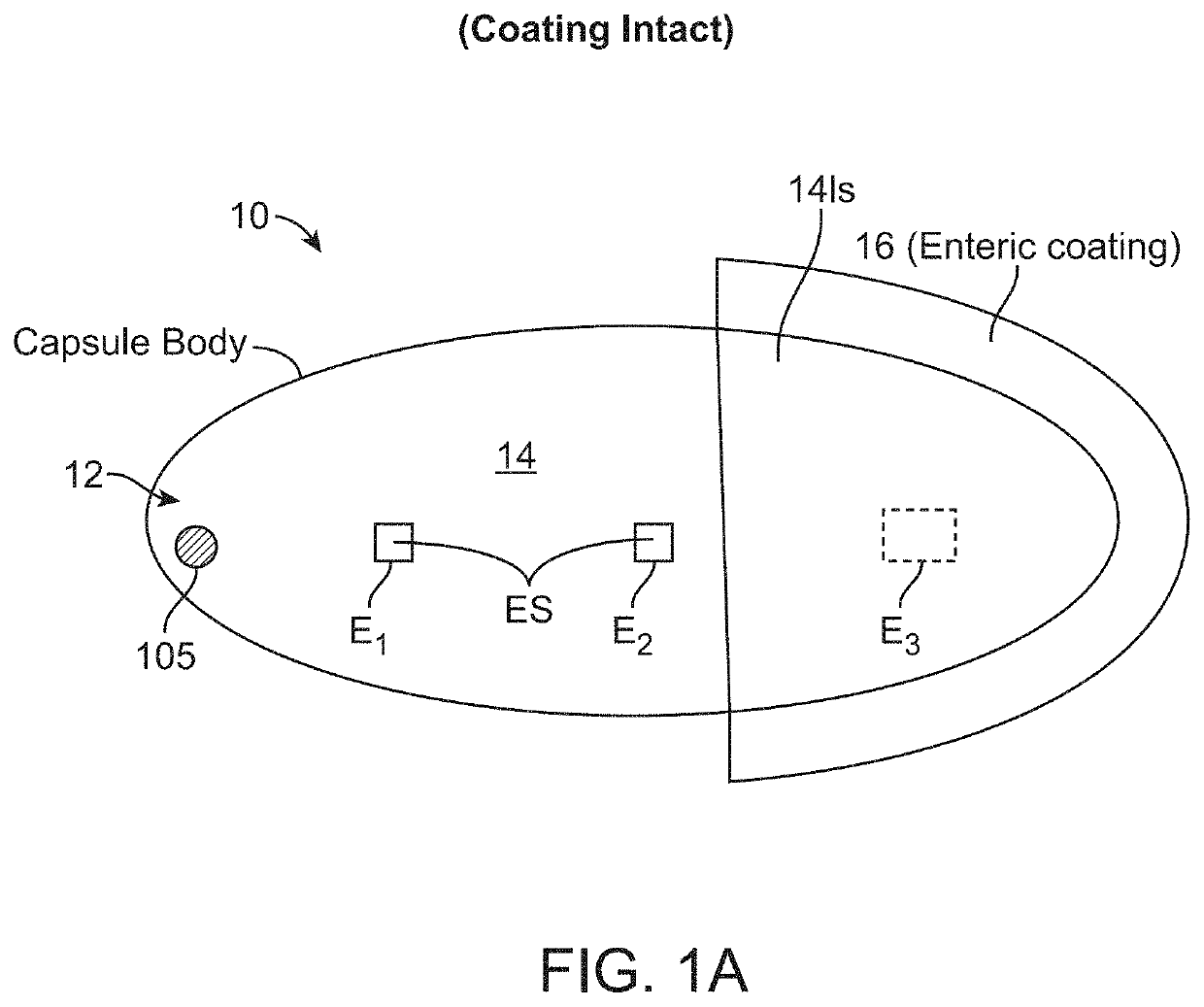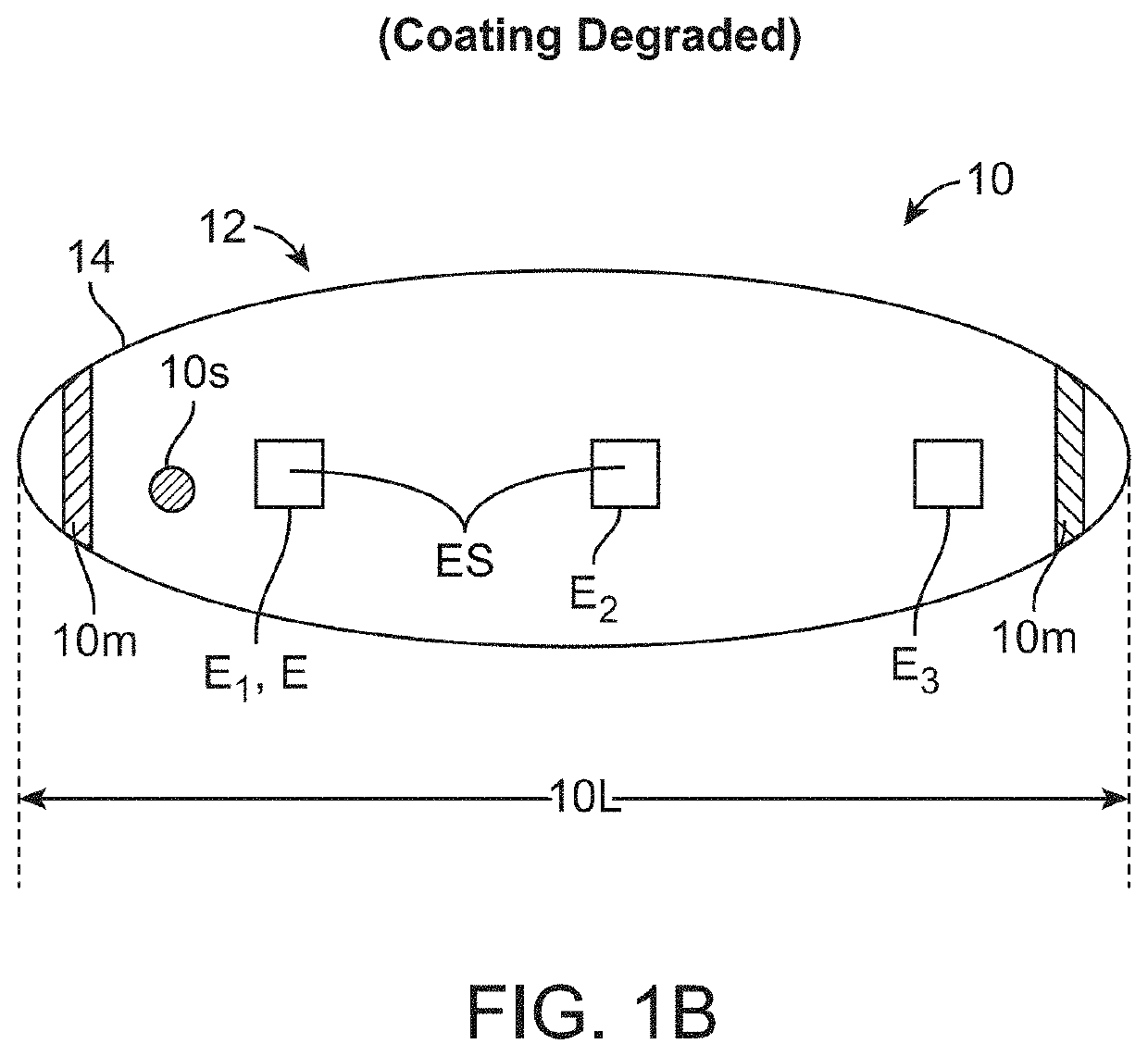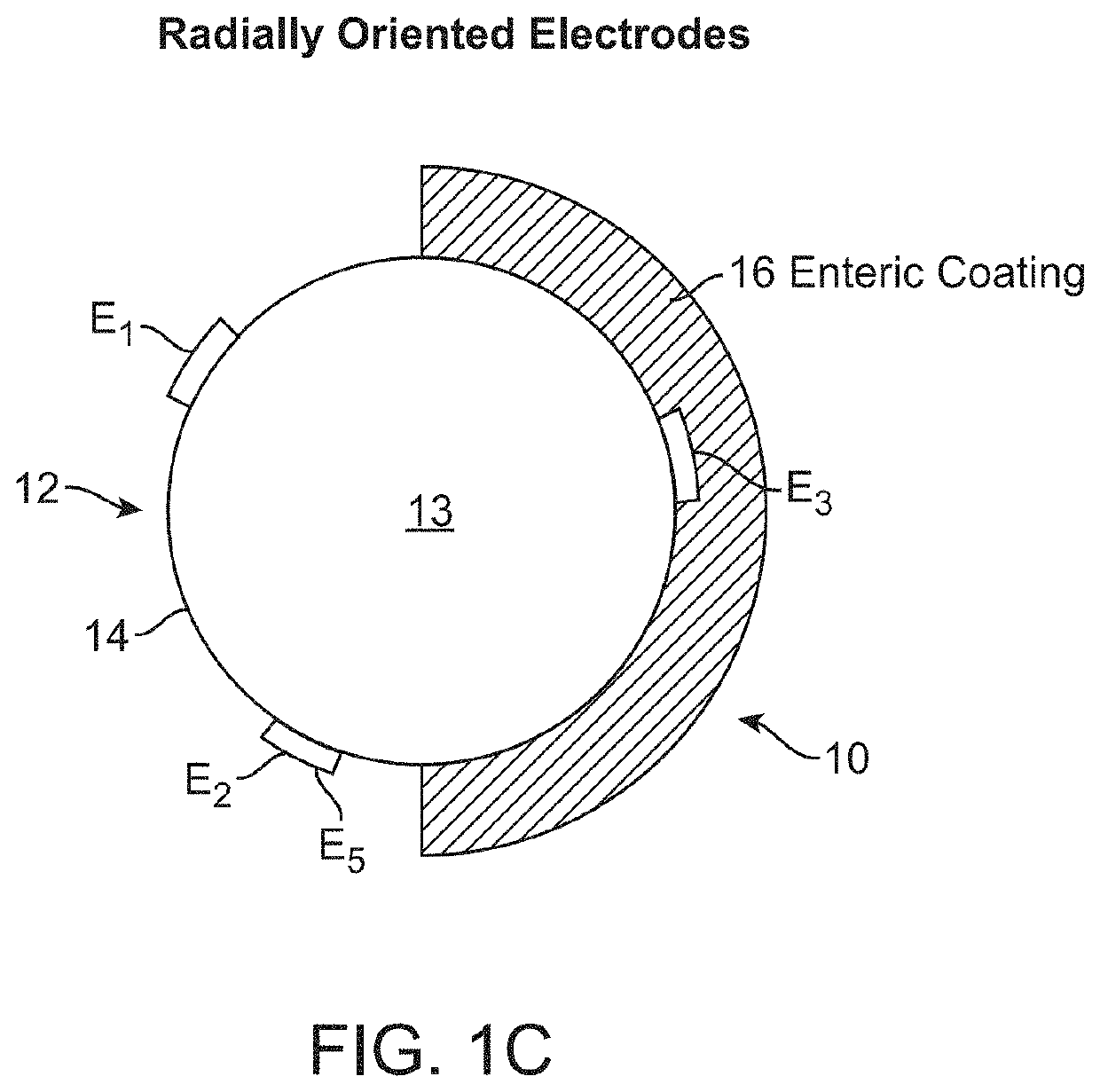Swallowable capsule, system and method for measuring gastric emptying parameters
a technology of gastrointestinal system and emptying parameters, which is applied in the field of swallowable capsules, systems and methods for measuring the physiologic parameters of the gastrointestinal system, to achieve the effects of improving diagnosis accuracy, slowing down food movement, and improving diagnosis accuracy
- Summary
- Abstract
- Description
- Claims
- Application Information
AI Technical Summary
Benefits of technology
Problems solved by technology
Method used
Image
Examples
Embodiment Construction
[0034]Embodiments of the present invention provide devices, systems and methods for measuring a gastric emptying (GE) parameter (GEP), such as a gastric emptying time (GET). Particular embodiments provide a swallowable capsule 10 having three or more electrodes E (E1, E2 and E3) with one of the electrodes covered by an enteric or other coating which remains intact in the stomach but degrades in the small intestine (SI). The electrodes E are coupled to circuitry C such that when the capsule is in the stomach, current flow occurs between the first two electrodes generating a first signal. In the small intestine, current flow occurs between the second E2 and now uncovered third electrode and E3 generating a second signal. These two signals can be transmitted and analyzed externally or by an internal controller 60 to determine a GEP, e.g., a GET. The patient may wear an external device configured to receive and analyze the signals to determine GET. Additional electrodes E may be include...
PUM
 Login to View More
Login to View More Abstract
Description
Claims
Application Information
 Login to View More
Login to View More - R&D
- Intellectual Property
- Life Sciences
- Materials
- Tech Scout
- Unparalleled Data Quality
- Higher Quality Content
- 60% Fewer Hallucinations
Browse by: Latest US Patents, China's latest patents, Technical Efficacy Thesaurus, Application Domain, Technology Topic, Popular Technical Reports.
© 2025 PatSnap. All rights reserved.Legal|Privacy policy|Modern Slavery Act Transparency Statement|Sitemap|About US| Contact US: help@patsnap.com



